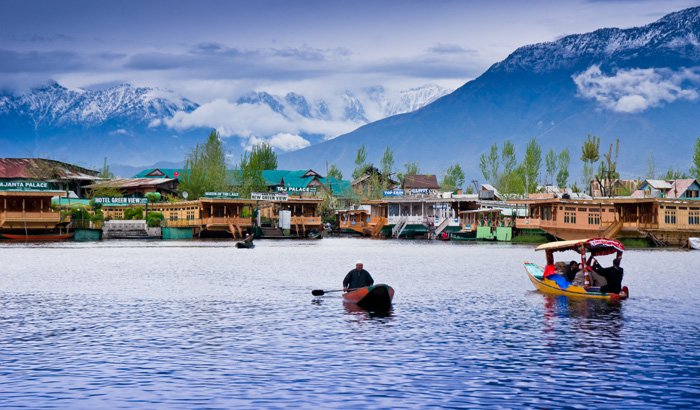The J&K government has attributed the death of thousands of fish in the Dal Lake in Srinagar to thermal stratification.
- Dal Lake, situated in the northeast of Srinagar in Kashmir valley.
- It is the 2nd largest lake in Jammu and Kashmir.
- The lake is probably of fluvial origin, formed from the oxbows of river Jhelum.
- Due to its beauty and attraction, Dal lake is also known as the “Jewel in crown of Kashmir or Srinagar’s Jewel”.
- It is declared as a protected wetland and a commercial fishing point.
- It has witnessed shore line Mughal gardens, such as Shalimar Bagh and Nishat Bagh built during the reign of Mughal Emperor Jahangir.
- It is a part of a natural wetland including its floating gardens.
- The floating gardens, known as Raad in Kashmiri, blossom with lotus flowers.
- The wetland is divided by causeways into 4 basins; Gagribal, Lokut Dal, Bod Dal and Nagin (although Nagin is also considered as an independent lake).
- Lokut-dal and Bod-dal each have an island in the centre, known as Rup Lank (or Char Chinari) and Sona Lank respectively.
Thermal Stratification
- It occurs when the surface layer of water, warmed by the sun, becomes less dense than the water underneath it.
- Pollution has badly affected the Schizothorax fish harvest and has destroyed the breeding grounds of the native fish.
- Data on harvest of Schizothorax, a local fish species known as Kashir gaad or Snowtrouts, from the lake between 1989 to 2019, shows a downward trend.
- The study suggested that the lake’s alkalinity has gone up.
- The chloride content of the water has drastically increased due to drainage from catchment areas, raw sewage coming from houseboats and nearby settlements and organic runoff from floating gardens.




